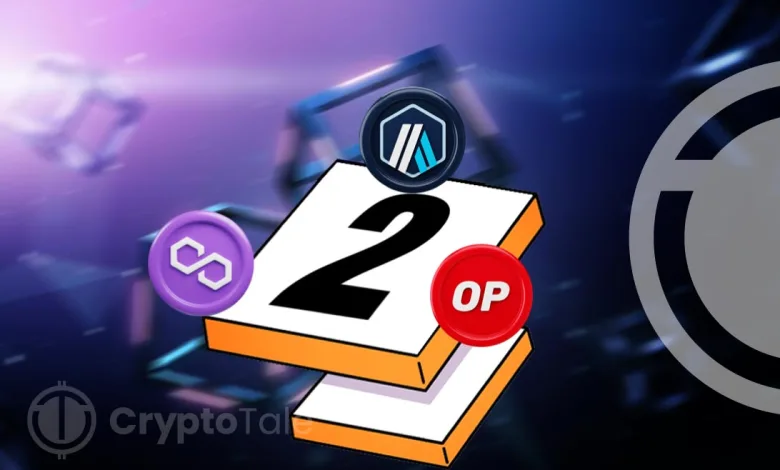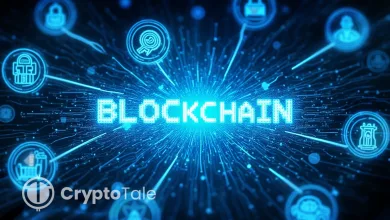What is Layer 2 Blockchain & Why is it Important?

Ever since crypto started gaining traction, scalability has always been a major problem. Because the speed of layer 1 transaction processing is slow, this has caused a rise in transaction fees and network congestion. These issues led to the birth of the layer 2 blockchain. This article will give you a detailed description of layer 2 blockchain.
What is Layer 2 Blockchain?
The layer 2 blockchain is a scaling solution developed to overcome the limitations of layer 1 blockchains, such as poor scalability, low throughput, and energy intensity. It is built on top of Layer 1 blockchains, such as Bitcoin, and executes transactions on a separate or off-chain network. This increases the speed of transaction processing and reduces costs. These layer 2 blockchains inherit the security of the blockchain they are built on.
Think of layer 1 as a waiter in a hotel; if there is only one waiter for 15 tables, it would take a long time for you to order the food and even longer to serve the food. Layer 2 solution solves this problem by assigning tables to 5 waiters so that each waiter can speed up the process of serving food.
What is The Need For Layer 2?
The main reason for the need for layer 2 solutions is scalability. Layer 1 networks prioritize decentralization and security, resulting in the mainnet gaining massive popularity over the years. This causes the network to be overloaded, as layer 1 blockchains can only process 7 – 15 transactions per second. Furthermore, increased network congestion causes a rise in transaction fees.
Layer 2 solutions solve these problems by enhancing the network’s scalability. So now, the layer 1 network can reduce the pressure by outsourcing transaction verification to the off-chain network. This allows Layer 1 to focus on security, data availability, and decentralization, while Layer 2 scales the network based on transactions.
Another reason for the need for Layer 2 solutions is that Layer 1 cannot keep up with growing adoption, resulting in high fees and slow execution times. The blockchain scalability issue arises from the difficulty in securing and decentralizing the network while also maintaining scalability. There must be a tradeoff among these three features to ensure proper functionality.
What Are Layer 2 Scaling Solutions?
Sidechains
Sidechains are independent EVM-compatible blockchains with their own native tokens and consensus mechanisms. They were designed to facilitate the transfer of digital assets between blockchains through a two-way peg. This allows the assets to transfer back and forth between the mainnet and the sidechain.
Furthermore, there is no actual transfer of assets between them; instead, they are locked in the mainnet while the equivalent amount is mined on the sidechain. The assets are validated through a smart contract, and the transaction is successful when they are validated on the sidechain. Once it is verified, the assets will be unlocked.
When it comes to governance and consensus, sidechains are more flexible because they have rules and mechanisms different from the main blockchain. Sidechains also have fewer nodes than L1, allowing them to achieve faster consensus. It also allows developers to operate their own consensus mechanisms, allowing them to optimize the network for security, scalability, or decentralization.
Rollups
Rollups are layer 2 scaling solutions that roll up transactions that are outside of layer 1 into a single piece of compressed data and send them back to the mainnet for review. There are two types of rollups: Optimistic Rollups and ZK Rollups.
Optimistic Rollups
Optimistic Rollups run alongside the mainnet; they execute transactions outside the blockchain and post transaction data to the mainnet. These rollups are called “Optimistic” because they assume all off-chain transactions are legit and valid. Unlike ZK rollups, they don’t publish proofs of validity for transactions.
Instead, they rely on fraud-proving schemes to detect fraudulent transactions. Once the data is submitted on the network, there is a time frame called the ‘Challenge Period’ during which anyone can challenge the validity of the transactions by executing a fraud-proof. If the fraud-proof is successful, it re-executes the transaction and updates the state of rollups. Furthermore, the sequencer responsible for validating the incorrect transaction will receive a penalty. On the other hand, if no one challenges the results of the rollup, it will be determined as valid and accepted on the blockchain.
Optimistic rollups have various advantages, such as security derived from the main blockchain, low transaction costs, and more. Some of its disadvantages include centralization, larger transaction finality, and more.
ZK Rollups
ZK (zero-knowledge) rollups generate cryptographic proofs called validity proofs to validate the authenticity of transactions. These proofs use a mathematical method to prove something is true without leaking any information about the transaction.
It enables thousands of layer 2 transactions to be bundled together in a single transaction and validated by the network while protecting the user’s data. ZK rollups allow the network to verify the transactions more efficiently and post-minimal summary data back to the mainnet because it only needs to provide validity proofs to finalize transactions.
It has advantages like near-instant transfers and decentralization. The disadvantages include increased computational difficulty for small applications with limited on-chain activity, high costs associated with ZK rollup-compatible EVMs, and other challenges.
Channels
Channels are a type of layer 2 scaling solution that allows two parties to conduct multiple transactions off-chain without recording the individual transaction data on the main blockchain. This method introduces peer-to-peer communication between the parties, enabling unlimited transactions while submitting only two transactions to the mainnet. One of the transactions is to open a link, and the other is to close the link. This approach reduces fees and network congestion and increases transaction speed. Channels are categorized into state channels, which support complex operations like updates, and payment channels, which are focused on facilitating payments.
Conclusion
Layer 2 blockchain is an essential advancement in blockchain technology that solves the limitations of layer 1 blockchains. By processing transactions off-chain, layer 2 solutions help enhance network security, reduce costs, and increase transaction speeds. With the increasing development of blockchain and the adoption of crypto by investors worldwide, layer 2 solutions will play an important role in maintaining the functionality and security of the layer 2 network.




